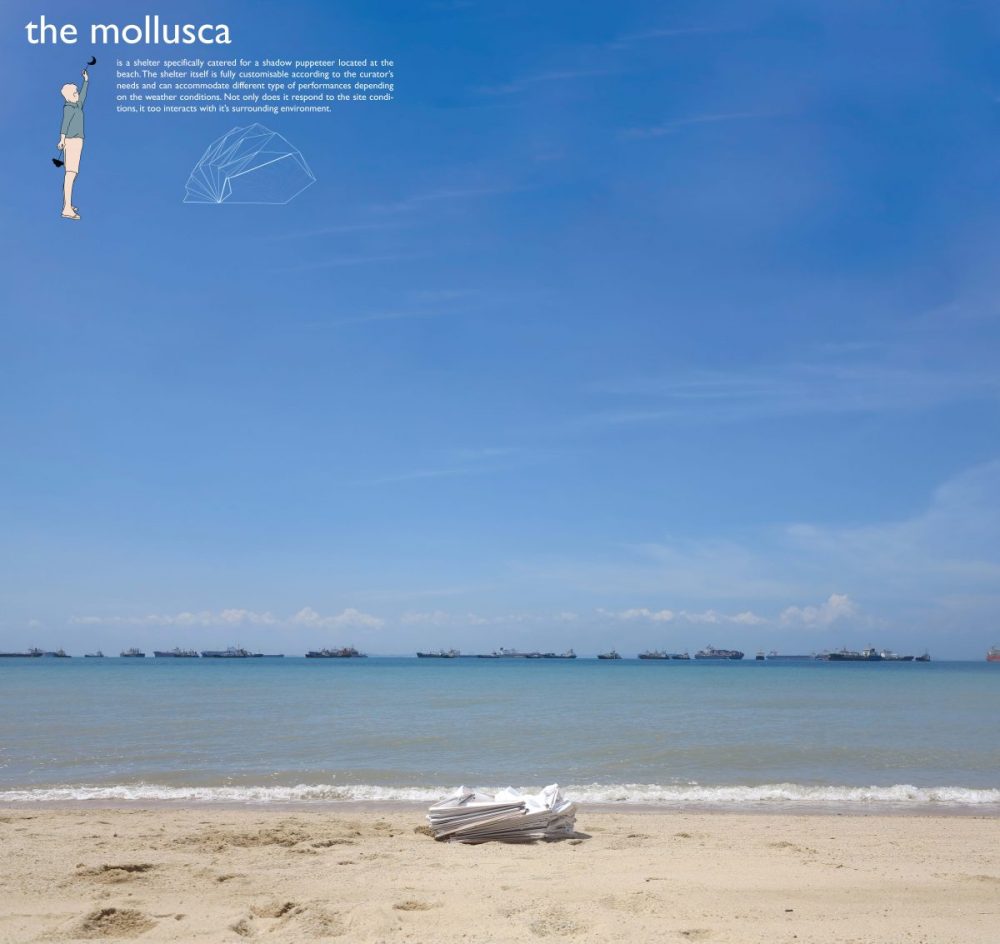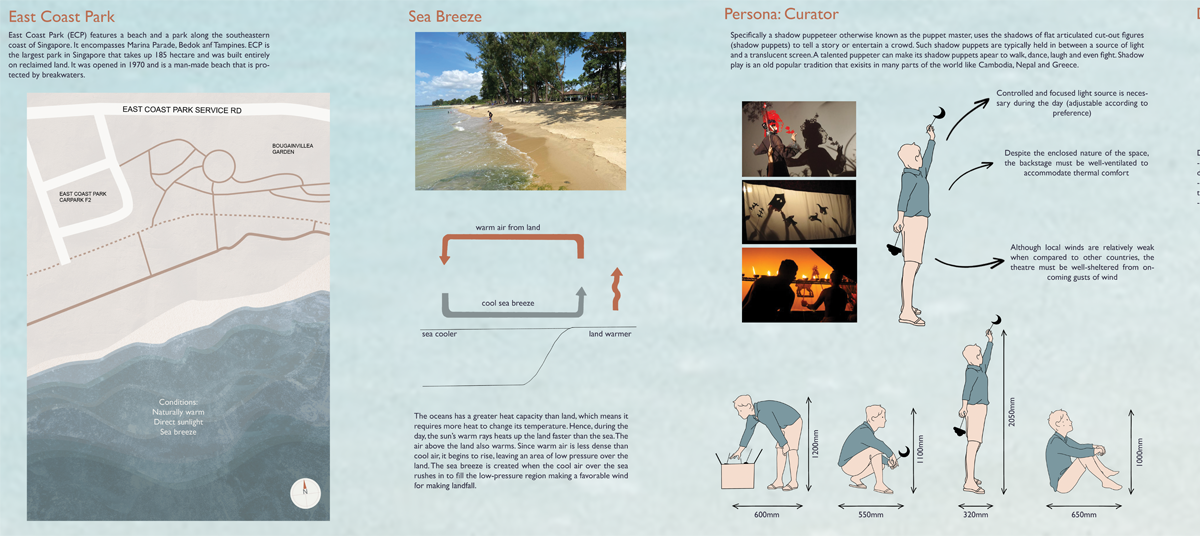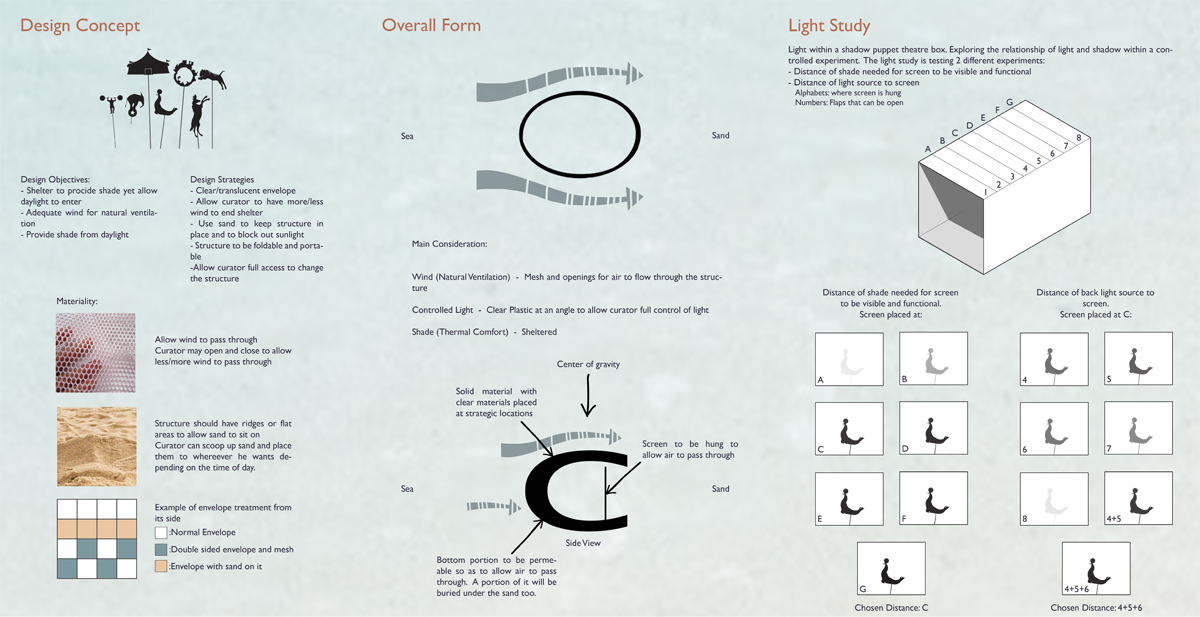
The project is a shelter specifically catered for a shadow puppeteer located at the beach. The shelter itself is fully customisable according to the curator’s needs and can accommodate different type of performances depending on the weather conditions. Not only does it respond to the site conditions, it too interacts with it’s surrounding environment.

After multiple design iterations, authors found that Origami was most suitable foldable form for their endeavour. For the waterfront design, authors chose Miura-ori folding pattern, whole integral components are parallelograms facets connected along folded lines. Morphology and/or mechanisms similar to that of Miura-ori are observed in Insect wings, tree leaves and embryonic intestine.

When folded, the origami takes a rather unique form that needs to be partially buried in sand to stand. The structure generally has a curved shape, while the folds help to break on coming gusts of wind. Theoretically, the C-shape also gives the structure some balance. The diagrams illustrate the joinery system using paper fasteners and rubber tubing, as well as the set-up process.
However, the general feedback is that the overall structure borders on being unconvincing, especially if sand is to be scattered on the surface.
A lightbox test was conducted to assess the optimal distance between the screen and the light source, such that the image seen on screen is clear enough. Authors also concluded that the screen cannot be flushed to the structure since it should be shaded for clear projections. The lightbox experiment helped determine three distinct points where the image is sharpest, directly affecting the overall form of the structure.
